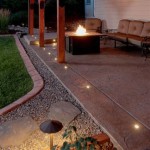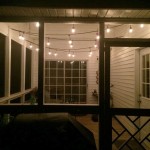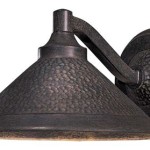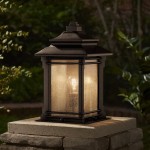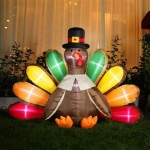What Size Should Outdoor Lights Be?
Selecting appropriately sized outdoor lighting involves considering several factors, including the intended purpose of the light, the size of the area being illuminated, and the overall aesthetic of the property. A fixture that is too small may not provide adequate illumination, while one that is too large can appear overwhelming and detract from the landscaping.
The “size” of outdoor lighting can refer to several aspects. It encompasses the physical dimensions of the fixture itself, the lumen output (brightness), and the wattage (energy consumption). Understanding these different aspects of size is crucial for making informed decisions.
**Fixture Size:** The physical dimensions of the fixture should be proportional to the surrounding architectural elements. For example, a small porch light might look out of place on a large, two-story home, while an oversized lantern could overwhelm a smaller cottage. Consider the scale of the door, window, or other features near where the light will be installed. Measure the height and width of these elements to get a sense of the appropriate fixture size. A good rule of thumb is to choose a fixture that is roughly one-third the height of the door.
**Lumen Output:** Lumens measure the total amount of visible light emitted by a light source. A higher lumen count indicates a brighter light. The required lumens will depend on the intended purpose of the light. Security lights, for example, require higher lumens to effectively deter intruders, while pathway lights need only enough illumination to ensure safe passage. A general guideline for different applications includes:
- **Pathway Lights:** 100-200 lumens
- **Accent Lights:** 50-150 lumens
- **Porch Lights:** 100-300 lumens
- **Flood Lights:** 700-1300 lumens
- **Security Lights:** 1500-3000 lumens
It's important to note that these are just estimates, and the optimal lumen output may vary depending on the specific environment and desired effect. Factors such as the distance the light needs to travel, the reflectivity of surrounding surfaces, and the presence of ambient light can all influence the perceived brightness.
**Wattage:** While wattage used to be the primary indicator of a bulb's brightness, it's now more accurate to consider lumens. Wattage measures the amount of energy a bulb consumes, not the amount of light it produces. With the advent of energy-efficient LED lighting, it's possible to achieve high lumen output with significantly lower wattage. When selecting outdoor lighting, focus on the desired lumen output and then choose the most energy-efficient bulb that meets those requirements.
**Different Light Types and Sizing Considerations:**
**Post Lights:** Post lights illuminate walkways and driveways. The height of the post is crucial for proper illumination. Standard heights range from 6 to 8 feet. Taller posts are suitable for larger properties or areas requiring more widespread lighting.
**Wall Lights:** Wall lights are typically installed next to doorways, garages, and other entry points. The size of the fixture should be proportionate to the surrounding features. Consider the height and width of the doorway or window when selecting a wall light.
**Pendant Lights:** Outdoor pendant lights can add a touch of elegance to covered porches and patios. Choose a size that complements the scale of the space. The bottom of the pendant should hang approximately 30-36 inches above a table or seating area.
**String Lights:** String lights create a festive atmosphere for outdoor gatherings. The length of the string and the spacing between bulbs will depend on the area being decorated.
**Landscape Lighting:** Landscape lighting enhances the beauty of gardens and outdoor features. Smaller spotlights and well lights are ideal for highlighting specific plants or architectural elements.
**Dark Sky Compliance:** In areas with dark sky initiatives, it's important to choose fixtures that minimize light pollution. Look for fixtures with shielded designs that direct light downwards, preventing it from scattering upwards into the night sky. Choosing appropriate lumen output is also key to minimizing light pollution.
Properly sized outdoor lighting enhances both the safety and aesthetics of a property. By considering the various factors discussed above, individuals can select fixtures that provide the right amount of light for their specific needs while complementing the overall design of their outdoor space.

Quick Guide Choosing The Right Sized Exterior Lighting Ideas Advice Lamps Plus

Outdoor Lighting Guide Delmarfans Com

Outdoor Lighting Guide Delmarfans Com

Outdoor Lighting Guide Delmarfans Com

Outdoor Lighting Guide Delmarfans Com

Outdoor Lighting Guide Delmarfans Com

How To Choose The Right Exterior Lighting Pender Peony A Southern Blog

The Complete Outdoor Lighting Size Guide Design Inspirations Lights Com Blog

Outdoor Lighting Sizing Guide How To Determine Fixture House Proportions

Size Matters How To Determine Fixture House Proportion For Outdoor Fixtures
Related Posts

